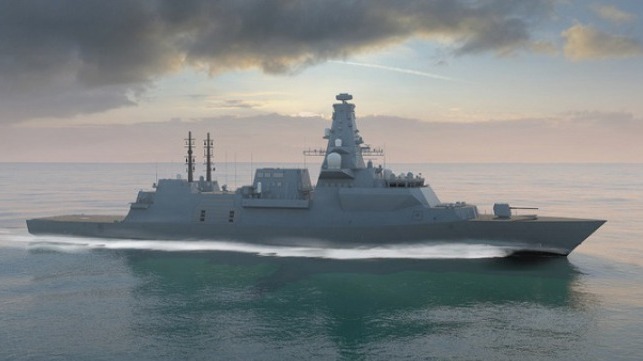UK's Type 26 Frigate Project Faces Delays

Construction of Royal Navy’s five Type 26 frigates in Scotland is facing the risk of further delays due to a planned strike early next year over pay and working conditions.
The Type 26 frigate program is grappling with delivery delays and cost overruns, and it has been the subject of criticism, including from the Parliament’s Defense Committee. Next year, the program will sail into further turbulence after electricians, laborers and cable hands employed by CBL Cable Contractors at the BAE Systems Govan and Scotstoun shipyards on the Clyde voted for industrial action.
Unite the Union announced that the contractors, who are working on the Type 26 warships, have called the strike over multiple days starting on January 10 and ending March 27, 2024. They are pushing to be paid the BAE Systems yard rate, or an additional £1 per hour on top of the current rate of pay.
The contractors are also demanding travel-related payments because the Clyde shipyards fall under the scope of the Joint Industry Board Agreement, which sets the standards for employment, grading and apprentice training in the electrical contracting industry. This covers travel time and the expense of driving to travel to work.
In November, the CBL Cable workers indicated their anger over the pay dispute by backing strike action by 100 percent on an 88 percent turnout.
The strike is bound to impact the construction of five Type 26 frigates being built by BAE Systems at a cost of $5.3 billion. The company was awarded the contract by the UK Ministry of Defense in November 2022.
“The CBL Cable workers are fully entitled to equal treatment at the Govan and Scotstoun yards. The company should stop paying lip service to the national agreement and immediately start paying the rate,” said Sharon Graham, Unite general secretary.
The UK-pioneered Type 26 frigate, which is an advanced warship with the primary purpose of anti-submarine warfare, to protect the country’s continuous at-sea nuclear deterrent and Carrier Strike Group. A total of eight Type 26 warships are being built and are designed to eventually replace the navy’s aging fleet of 12 remaining Type 23 anti-submarine frigates.
The frigates will be equipped with a range of advanced capabilities, including the Sea Ceptor missile defense system, a 5-inch medium caliber gun, a flexible mission bay, Artisan 997 Medium Range Radar and towed array sonar. They will also be armed with the future cruise/anti-ship weapon capability.
The project is facing delays and cost overruns. The House of Commons Defense Committee stated in July that the delay comes at a cost of $300 million, putting further pressure on an already-stretched naval budget. The class is now expected to reach its initial operational capability by October 2028 instead of October 2027.
The first City-class ship, HMS Glasgow, is currently undergoing completion in a dry dock at the Scotstoun shipyard and is due in service later this decade. Construction of the ships is supporting 1,700 BAE Systems jobs in Scotland and about 2,300 jobs across the wider UK maritime supply chain until 2035.
